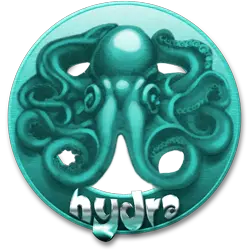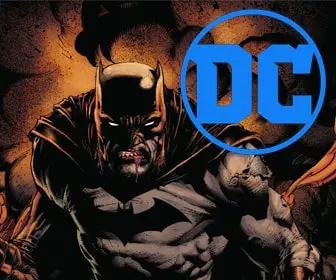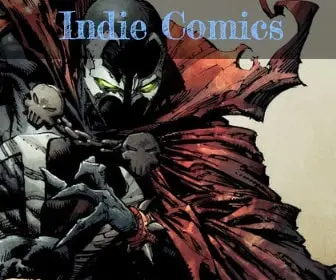
Visual Alchemy: Exploring the Transformation from Manga to Anime
Manga is a Japanese form of comic books and graphic novels. It originated in Japan and has become immensely popular both within the country and globally. Manga covers a wide range of genres, including action, romance, fantasy, science fiction, and more. It is characterized by its distinctive art style, featuring expressive characters, detailed backgrounds, and dynamic panel layouts. Manga is typically read from right to left, following the traditional Japanese writing style.

Anime, on the other hand, refers to animated works that are based on manga or original stories. It encompasses a vast array of animated TV series, films, and OVA (original video animation) productions. Like manga, anime covers various genres and appeals to diverse audiences. It brings the manga stories to life through captivating visuals, animated movements, and the addition of voice acting, sound effects, and music. Anime showcases the creativity and imagination of its creators, delivering compelling narratives and exploring complex themes.
The adaptation process involves transforming a manga, which is a printed form of storytelling, into an animated format known as anime. It is a complex and creative endeavor that requires careful consideration of various elements to ensure a faithful and engaging adaptation. The process typically involves a team of producers, directors, writers, animators, and voice actors who collaborate to bring the manga’s story, characters, and visual style to life on screen.
During the adaptation process, the manga’s storyline is analyzed and condensed to fit the constraints of the anime format, which often has a limited number of episodes. The pacing and structure of the story may be adjusted to maintain a compelling narrative flow. The visual elements, such as character designs, settings, and action sequences, are reimagined to suit the animated medium, while still staying true to the original manga’s style and aesthetic.
Another crucial aspect of the adaptation process is the translation of the manga’s emotional impact into the animated scenes. The animators strive to capture the essence of the manga’s storytelling techniques, such as dynamic panel layouts, intense expressions, and visual symbolism, while utilizing animation techniques to enhance the dramatic effect. Voice actors bring the characters to life through their performances, infusing them with personality and emotion.
Throughout the adaptation process, the goal is to maintain the spirit and integrity of the original manga while leveraging the unique strengths of animation to create a captivating viewing experience. It requires a balance between faithfulness to the source material and the creative choices necessary to make the story engaging in its animated form.
Manga to Anime: The Transformation
Translating the visual storytelling from manga to anime is a crucial aspect of the adaptation process. Manga relies heavily on its visual elements, such as panel layouts, facial expressions, and action sequences, to convey emotions, set the mood, and advance the story. When adapting manga into anime, the challenge lies in recreating these visual cues and effectively translating them into animated scenes.
One of the key considerations is capturing the essence of the manga’s art style. Each manga artist has a unique approach to character designs, backgrounds, and overall aesthetics. The anime adaptation team must carefully study and understand the manga’s artistic choices to ensure a faithful representation. They strive to maintain the distinct visual identity of the original work while adapting it to fit the animated medium. This includes recreating the iconic character designs, intricacies of the settings, and maintaining consistency with the manga’s visual language.

Another important aspect is conveying the dynamic action sequences present in manga. Manga panels often depict intense and visually striking action, showcasing the characters’ movements and the impact of their powers or abilities. In anime, animators use their skills to bring these action scenes to life with fluid animations, detailed choreography, and impactful visual effects. The goal is to preserve the excitement and intensity of the original manga, allowing viewers to experience the thrilling moments in a dynamic and immersive way.
The adaptation process also involves adapting the pacing and storytelling techniques used in manga to the animated format. Manga often utilizes page-turning and panel-to-panel transitions to create suspense, reveal surprises, or build tension. Animators and directors must find creative ways to translate these techniques into animated scenes, using techniques such as well-timed cuts, camera angles, and scene transitions to evoke similar emotions and engage the audience.
Narrative and pacing
Adapting the narrative and pacing is a crucial aspect of the manga-to-anime adaptation process. While manga and anime share the same core story, they differ in terms of how the narrative unfolds and the pacing of the storytelling.
In manga, the narrative is often presented through a combination of dialogue, narration, and visual imagery within individual panels and pages. The reader has control over the pace of the story, able to linger on specific panels or quickly move through pages.
When adapting manga into anime, the challenge is to recreate the narrative structure in a way that engages the audience and maintains their interest. The adaptation team carefully selects which parts of the manga to include, considering the length of the anime series or film. They may condense or expand certain story arcs, adjust the sequence of events, or introduce original content to ensure a cohesive and satisfying viewing experience.
Pacing plays a crucial role in the adaptation process. Manga panels allow readers to absorb information at their own pace, while anime has a fixed runtime for each episode or film. Adapting the pacing requires skillful editing and scene transitions to maintain a natural flow and balance between action, dialogue, and quiet moments. The aim is to create a rhythm that keeps viewers engaged, effectively conveying the emotional beats and plot developments of the original manga.
Furthermore, adaptations often involve making adjustments to dialogue and narration. Manga dialogue is typically concise and to the point, while anime allows for more naturalistic conversations with the inclusion of voice acting and expressive performances. Adaptation teams work closely with scriptwriters and voice actors to capture the essence of the characters’ personalities and emotions while remaining true to the original manga’s intent.
Bringing characters to life through animation
Bringing characters to life through animation is a vital aspect of the manga-to-anime adaptation process. In manga, characters are depicted through static illustrations, allowing readers to interpret their personalities, emotions, and actions based on visual cues and dialogue. However, in anime, the challenge lies in animating these characters and giving them movement, expressions, and voices that resonate with the audience.
The animation team works diligently to capture the essence of each character from the manga and translate it into their animated counterparts. They study the original manga’s artwork, paying attention to the artist’s unique style and character designs. This meticulous attention to detail ensures that the anime characters remain faithful to their manga counterparts while adapting them to fit the dynamic nature of animation.
Through animation, characters gain the ability to express a wide range of emotions and physicality. Facial expressions, body language, and fluid movements allow for a deeper understanding of their personalities and intentions. Voice acting plays a significant role in bringing characters to life, as skilled voice actors infuse their performances with the right tone, nuances, and emotions to match the manga’s depiction.
Adapting characters for animation also involves considering the technical aspects of animation, such as creating consistent character models, defining unique visual traits, and animating their actions and interactions with the environment. The animation team collaborates closely with character designers, animators, and directors to ensure that the characters’ visual and behavioral traits are faithfully represented in the anime.
Challenges
Maintaining the essence of the source material is a crucial aspect of the manga-to-anime adaptation process. While adapting a manga into an anime, it is essential to preserve the core elements that make the story and characters unique and captivating. This involves staying true to the original tone, themes, and overall atmosphere of the manga.
Adapting the narrative while maintaining its essence requires careful consideration of pacing, story structure, and character development. Some manga series have extensive story arcs or intricate plotlines that may need to be condensed or rearranged to fit the constraints of an anime’s runtime. It is crucial for the adaptation team to prioritize the most significant story beats and character moments to ensure that the core narrative is faithfully portrayed.
Characterization is another vital aspect of maintaining the essence of the source material. Characters in manga often have distinct personalities, quirks, and growth arcs that contribute to their overall appeal. When adapting these characters for anime, it is essential to capture their essence and growth, ensuring that their personalities and relationships remain consistent and compelling.
Visual aesthetics also play a crucial role in maintaining the essence of the source material. Manga often has a unique artistic style, and it is crucial to translate that into the animated medium. This may involve recreating the original artwork’s distinctive linework, color palettes, and visual motifs to evoke the same visual experience as reading the manga.
Balancing fan expectations and creative liberties is a delicate yet essential aspect of the manga-to-anime adaptation process. Fans of the original manga often have specific expectations and attachments to the source material, which can make the adaptation a highly anticipated and scrutinized endeavor. However, it is also crucial for the creative team to have the freedom to bring their own artistic vision and storytelling techniques to the anime adaptation.
Finding the right balance involves understanding the core elements that fans love about the manga while also embracing the opportunity to explore new creative possibilities in the animated medium. It requires careful consideration of what aspects of the manga should remain faithful to appease fans and what areas can be expanded upon or reimagined to enhance the anime’s visual and narrative impact.
One way to strike this balance is by involving the original manga creator or obtaining their input during the adaptation process. Their insights can help guide the adaptation team in preserving the essence of the source material while allowing for necessary adjustments to suit the animated format. This collaboration ensures that the adaptation remains respectful to the creator’s intentions and maintains a sense of authenticity that fans appreciate.
At the same time, creative liberties should be taken to adapt the manga successfully into a different medium. Animation offers unique opportunities to enhance storytelling through dynamic visuals, sound design, and voice acting. By embracing these possibilities, the anime adaptation can bring new life and immersive experiences to the original manga, capturing the essence of the story while delivering a fresh and engaging viewing experience.
Balancing fan expectations and creative liberties is a delicate tightrope walk, but when done successfully, it can result in an anime adaptation that both honors the original manga and offers something new and exciting for fans and newcomers alike. It requires open communication, a deep understanding of the source material, and a commitment to preserving the heart of the story while embracing the creative potential of animation.
Notable Manga-to-Anime Adaptations
Several successful manga-to-anime adaptations have left a lasting impact on the industry, showcasing the power of a well-executed transition from one medium to another. These adaptations have not only garnered critical acclaim but also attracted a wide audience, both fans of the original manga and newcomers alike.
One notable example is “Attack on Titan,” originally written and illustrated by Hajime Isayama. The anime adaptation captivated viewers with its intense action, intricate world-building, and gripping storyline. The adaptation’s success brought newfound popularity to the manga and introduced a global audience to the dark and captivating world of Titans and the struggle for survival.
Another impactful adaptation is “Fullmetal Alchemist: Brotherhood,” based on the manga by Hiromu Arakawa. The anime masterfully captured the complex themes, rich character development, and intricate plot of the source material. With its stunning animation, compelling storytelling, and emotional depth, the adaptation won the hearts of fans worldwide and elevated the series to iconic status.
“Haikyu!!” is another manga-to-anime success story. The adaptation of Haruichi Furudate’s volleyball-themed manga brought the exhilarating matches, the camaraderie of the team, and the emotional journeys of the characters to life. The anime’s dynamic animation and skillful pacing enhanced the intensity and excitement of the matches, leaving a lasting impact on both sports anime enthusiasts and those new to the genre.
The impact of these successful adaptations extends beyond the screen, as they have contributed to the growth and popularity of manga and anime on a global scale. They have inspired fan communities, cosplay, merchandise, and even cultural appreciation for Japanese storytelling and artistry. These adaptations have demonstrated the potential of manga-to-anime transitions to transcend cultural boundaries and resonate with audiences worldwide.
The interconnectedness of manga and anime is a key aspect of their enduring appeal and widespread appreciation. While manga serves as the original source material, providing the foundation for storytelling and character development, anime brings these stories to life with its visual and auditory elements, adding movement, color, and sound to the narrative. This symbiotic relationship between manga and anime allows for a deeper exploration and understanding of the stories and characters, creating a rich and immersive experience for fans.
Manga often acts as a launching pad for anime adaptations, with the popularity of a manga series driving the demand for an animated version. The transition from manga to anime opens up new possibilities for storytelling, enabling dynamic animation techniques, voice acting performances, and musical compositions to enhance the narrative. The visual medium of anime brings the art of manga to life, allowing viewers to witness the characters’ expressions, action sequences, and detailed settings in motion.
Moreover, anime adaptations often contribute to the further success and recognition of manga series. A well-executed anime adaptation can introduce a wider audience to a particular manga, sparking interest and encouraging readership. Many fans of anime are inspired to delve into the original manga after experiencing the animated adaptation, deepening their appreciation for the story and gaining additional insights into the world and characters.
Conversely, the popularity of an anime series can also lead to increased manga sales and broader recognition for the original work. Anime serves as a powerful promotional tool, exposing viewers to the manga source material and enticing them to explore the story in its original form. This interconnectedness between manga and anime fosters a continuous cycle of creativity, where each medium feeds into the other’s success and contributes to the overall growth of the industry.
In essence, the appreciation for the interconnectedness of manga and anime lies in the way they complement and enrich each other. The combined power of visual storytelling, compelling narratives, and immersive experiences creates a unique and captivating medium that resonates with fans worldwide. The interplay between manga and anime allows for the exploration of diverse genres, artistic styles, and narrative techniques, offering an ever-expanding universe of stories and characters to enjoy and appreciate.










